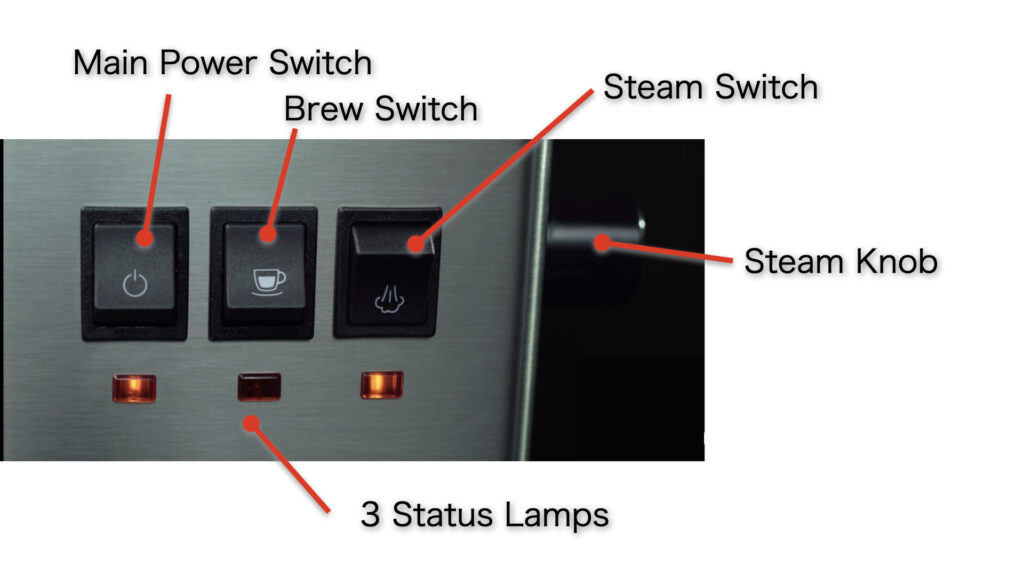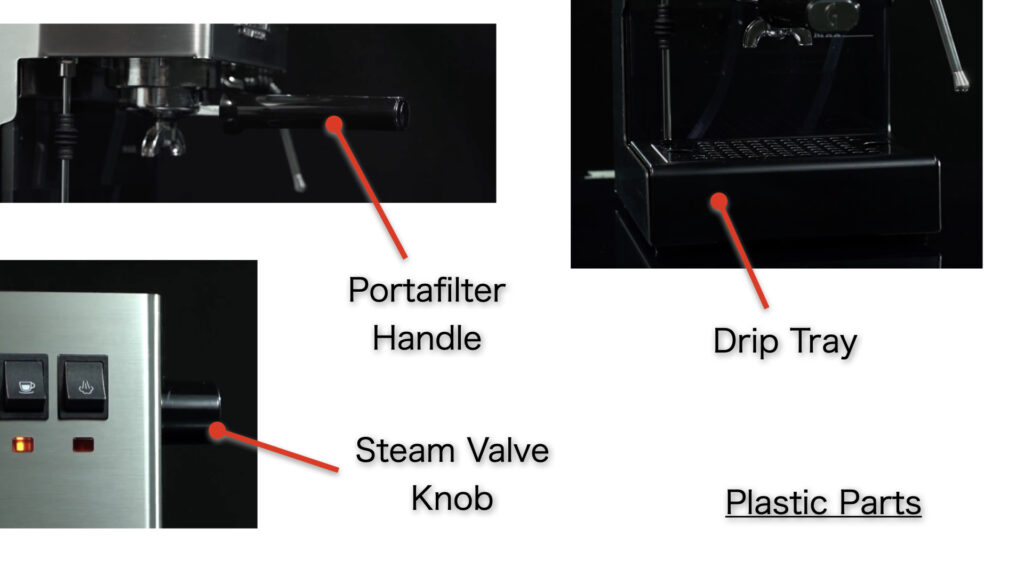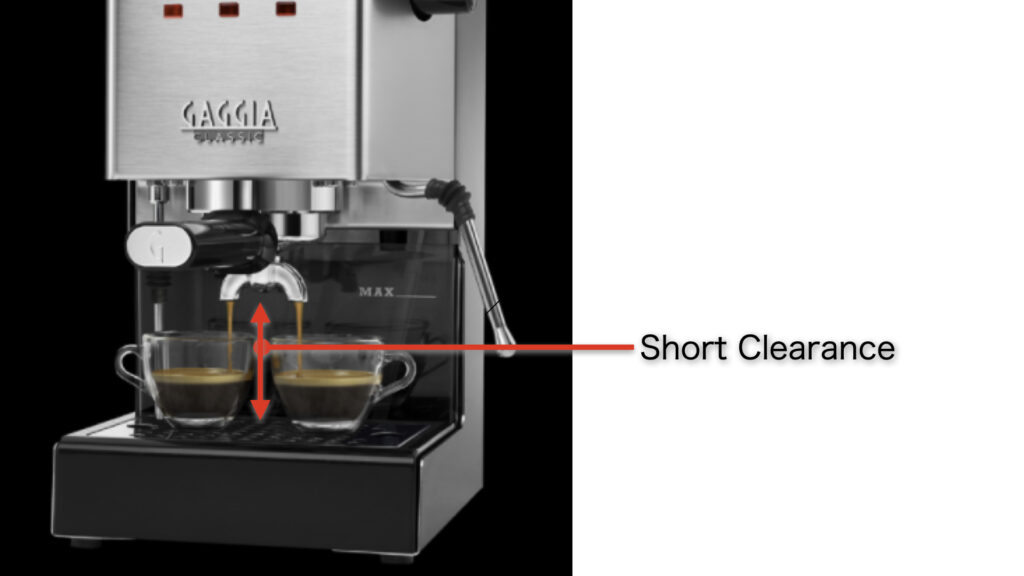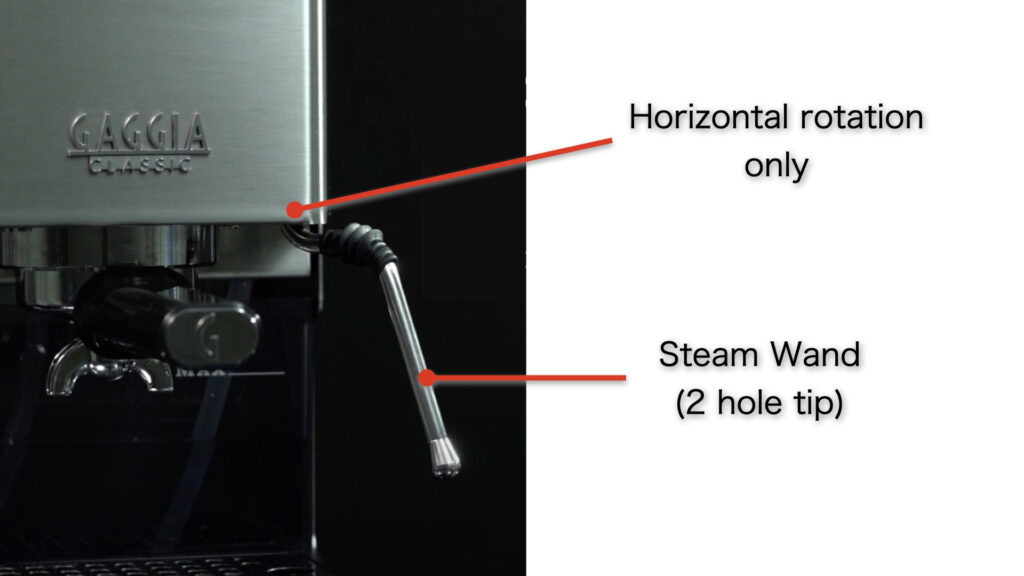Hi everyone!
I have been wanting an espresso machine for my house for a couple of months. During which time, I have been researching about them quite intensely. I now have a good sense of what I should be looking for. I have summarized the important points in these posts.
- Machine Types : Manual / Semi-Auto / Fully-Auto / Super-Auto
- Boiler Types : Single / Dual / Heat Exchanger
- Portafilters : size, spouts
- Baskets : size, quality
Today I would like to start looking at specific machines and investigating how they might fit a first time buyer’s needs, like me.
The first machine we will look at is the Gaggia Classic Pro. This machine is one of the top two popular machines when it comes to entry level machines. The other one being the Rancilio Silvia, which we will also look at in an up coming post.

The most notable aspect of the Gaggia Classic Pro is that it offers true espresso extraction capabilities at the lowest prices possible.
You hear a lot about how there is a great gap between true espresso and an espresso-like drink. The Gaggia Classic Pro comes packed with the necessary quality and functions for a true espresso, but does this at a significantly lower price.
Let’s take a look at the benefits and any potential compromises with this very popular machine.
(As a disclaimer, I do not own this machine nor have I used one. This post will cover information collected from my research and my thoughts on them as someone looking to buy their first espresso machine.)
General specs
The Gaggia Classic Pro is a single boiler semi-automatic machine.
Only having a single boiler, you can not brew and steam at the same time (for more detail about boiler types refer to this post). Semi-automatic means that the user has to start and stop the brew (this post will give more details about machine types)
A great selling point for this machine is that it uses a 58mm basket, the standard size used by commercial grade machines.
The controls are very simple, with 3 buttons and one knob and 3 LED indicators.

As a word of caution, there is a predecessor model called the Gaggia Classic, which looks quite alike. Actually, the name Gaggia Classic Pro is not the official name, although it’s what everyone calls them. Gaggia refers to them as the New Classic.
To tell apart the old version and the Classic Pro, you can look at the button area. The old one has one black area in which all 3 buttons reside. The Classic Pro has 3 independent switches.
The Classic Pro has numerous improvements which include better steam wands and the addition of the solenoid valve, etc.. I would go with the Classic Pro.
Cost
The Gaggia Classic Pro retails for about $450 in the US. That does sound like a lot of money for people looking for their first espresso machine. But it probably is one of the lowest cost machines capable of true espresso.
I should point out that depending on where you live, the price may vary significantly. In Japan, where I live, Gaggia doesn’t sell the machines directly. So you will rely on importers. They will bump up the price and I have even seen the machine listed for about $1200. Which is just slightly shy of triple the price! Imports will come at a cost so a higher price is expected, but make sure that you are not getting an unfair price.
I really do hope that home espresso brewing becomes more common in Japan so that machine manufacturers will be able to supply the machines directly. I hope that this blog will do some small part in helping this happen!
Look and Feel, Construction
As you can see, the Gaggia Classic Pro has a mostly stainless steel body. The size is 23 x 38 x 24 cm and is a very compact machine.
It weighs 7.3kg signifying that it is made with substantial parts with a solid construction. However it is on the lighter end of espresso machines, and a minor inconvenience heard is that you have to hold down the machine when locking in your portafilter.
I believe that in order to achieve the very low cost, Gaggia have compromised in the premium feel. The portafilter handle, steam knob, and drip tray are made from a relatively cheap feeling plastic. This is not a bad thing. I would like to applaud their design choices of putting the espresso quality first within a constrained budget.

In the end, having plastic parts on the handle and the knob does not affect the quality of the espresso at all. But for the parts that do matter, like the boiler, and pump, Gaggia did not cheap out. Even the portafilter is made from commercial grade chrome plated brass, since it affects brew temperature consistency.
There is no arguing that the premium feel of a product is very important. It directly impacts your satisfaction in owning it. So in this sense the Gaggia Classic Pro does have some compromises. But I feel that it’s focus an performance has made this machine loved by so many.
The drip tray is made of plastic and is easy to remove. The tray does not have a float, which indicates how much water is in your tray, so you will need to watch out for it to not overflow. Although is does not have a float, it the tray can be removed without tilting it, so the risk of spillage is limited.
A point to watch out for is that the clearance from the spout to drip tray is quite short. If you are using small espresso cups, this will not be an issue. However if you want to have a large latte cup, or if you want to put a scale to weight your shot (which you should) then you may run it to some problems.

A solution is to use a bottomless portafilter, which does not have a spout. Or another, potentially messy, way is to just use the machine with the drip tray removed. Also people have made lower height drip trays to mod the machine.
The water reservoir can be accessed from bot the top of the machine and the front. The tank is visible from the front making it very easy to see how much is left.
Solenoid Valve

This part, which is more precisely called the 3-way solenoid valve, acts as a release path for the remaining pressure in the group head after the extraction. This part is essential in leaving you with a dry, easy to clean puck of coffee in your portafilter at the end.
Without a solenoid valve, the puck could sort of explode when the portafilter is removed, or the remaining water in the brew chamber could leave you with a soupy messy puck.
Boiler
As mentioned before, the Gaggia Classic Pro is a single boiler machine. The boiler capacity is quite small at about 100ml, but it has a 1400W high power heating element.
This combination makes this machine very quick to warm up. The switch between brewing and steaming is also quick.
Because of the small capacity, the Gaggia Classic Pro may not be well suited to make a lot of drinks back-to-back. However it is more than capable of preparing about 2 cups worth of espresso and steamed milk.
Having your machine always on in order to avoid the wait is a big waste of energy. But also it sucks to have to wait a long time for the machine to warm up. In this perspective, the Gaggia Classic Pro has a clear benefit.
This machine does not allow you to adjust the brew temperature, nor does it include a PID controller to have stable temperatures.
So is it normal to have quite a wide range of brew water temperatures coming out of the machine. However this can be managed by a method called temperature surfing.
Temperature surfing is where you have a fixed routine of flushing the group head until the brew lamp turns off (indicating a specific temperature in the boilder), then waiting a certain number of seconds for the temperature to rise to your desired point, then starting the brew. This allows you to get relatively consistent temperature.
Pump
The Gaggia Classic Pro uses a vibration pump, which is used in many machines. The pump brew pressure is set to about 15Bars. The machine does not allow you to adjust this (at least not without modding the machine)
It also does not come with a brew pressure gauge, so you really do not know what your pressure is during your shot.
A frequent complaint made on the Gaggia Classic Pro is its high pressure. Of course pressure is an essential part of espresso brewing, but modern espresso typically calls for about 9 bars of pressure. (There is not right answer to this) The fact that the machine comes with 15bars from the manufacturer is very intentional. Gaggia’s website clearly states that 15bars is the perfect pressure for Italian espresso. The higher the pressure, the more crema you get, but at the same time you increase the chances of you getting a channel forming under the high pressures.
I will cover this in a bit more detail later, but there are ways to modify the machine to brew at a different pressure.
Steaming
The Gaggia Classic Pro comes with a true commercial style steam wand with 2 holes. It does not have some silly auto frothing wand which you may find in more appliance grade machines.
A minor drawback is that the wand only rotates in the horizontal direction, as opposed to being on a ball joint. It is somewhat restrictive, but it is not a big issue.
The power of the steam is sufficient and is perfectly capable of producing quality micro-foam. It is said that the power is weaker than other popular machines such as the Rancilio Silvia, but gives you a bit more time in your steaming which may actually turn out to be a plus for beginners.

MODs
The Gaggia Classic Pro is a very popular machine with a large active community. Together with its simple internal design, it has attracted a number of people modding the machine and upgrading it.
One of the simplest mods is the OPV (Over Pressure Valve) adjustment. This aims to adjust the previously mentioned high pressure of the pump at 15bars, to something like 9bars (or whatever you like). The mod simply requires you to replace a single spring inside the machine and that’s it.
Other more complicated modus include temperature control with PID. A lot of people are doing different things. Mod kits and guides are widely available. By modding this affordable machine, you may be able to transform it to a machine capable of much more than its price bracket.
I am actually an engineer, so this sort of tinkering and modding aspect does appeal to be a great deal.
Summary
The Gaggia Classic Pro is a very capable entry level espresso machine, which is equipped with all the functionality you need for true espresso brewing. A lot of reviewer mention that this machine is capable of producing espressos which are nearly identical to ones brewed by machines two or three times its price. The steaming capabilities are also great and will make you excellent lattes (with practice, of course). The fact that it uses the standard 58mm portafilter is a great plus.
I think that the machine has been well optimized for the quality of the espresso within the very limited budget of this low cost machine. It has traded off some the of esthetics for the quality, but it is a great choice for those looking for a machine which provides the best performance to cost balance. If you are someone that really cares about the premium feel of the machine, maybe you should keep looking at a bit more expensive alternatives.
I personally feel that the Gaggia Classic Pro looks great. The build quality is solid and with care it will function for a very long time.
It is widely said that the quality of your grinder affects the quality of espresso more than the espresso machine. If you can same some of your budget by choosing the Gaggia Classic Pro, and allocate that budget for a better grinder, that is probably the best way to get the best espresso setup with a constrained budget.
So what did you think about the Gaggia Classic Pro? Do you have one? Are you looking to buy one? Please leave a comment if you have some time!




コメント